
In this tutorial we will walk through the four screens (‘Home’, ‘Rig’, ‘Record’ and ‘Stream’). We will then look at the ‘Home’ screen and use one of the free sample puppets to start animating. Lets get started!
Like any new program, when you first open Adobe Character Animator it can be a little intimidating. This tutorial aims to get you introduced to the program and animating within a few minutes. So go ahead and launch Adobe Character Animator.
Lets start with the ‘Home’ icon. You’ll find this over on the top left of screen. It looks like a little house.
Click the ‘Home’ button.
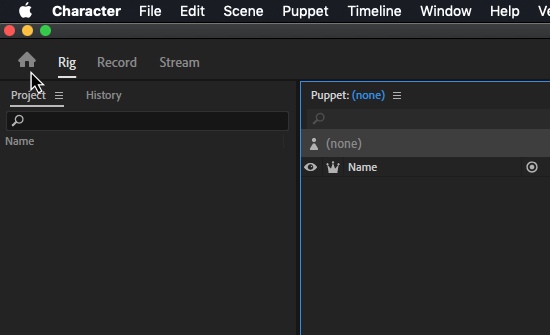
Clicking this takes you to the Adobe Character Animator ‘Home’ screen. Here you can start a tutorial that offers a walk through of the software, as well as a range of free puppets you can import and play with.
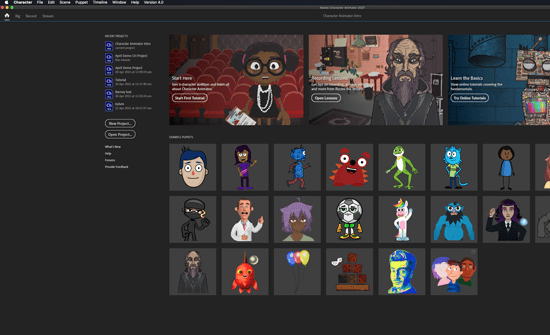
We will come back to the ‘Home’ screen in a moment.
Let’s click on the ‘Rig’ button. The ‘Rig’ screen is where you can rig a puppet. Rigging means setting up all the controls for the puppet (like triggers).
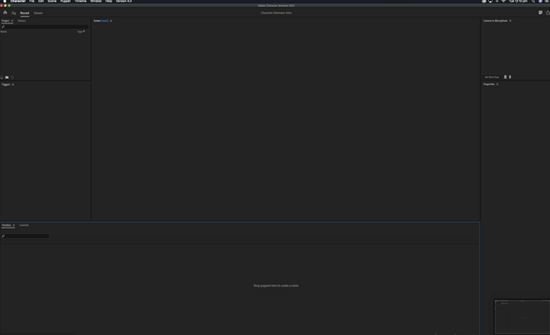
Next click on ‘Recording’ Button. The ‘Recording’ screen is where we work with scenes. Scenes are where we create our animation.
Last is the ‘Stream’ button. If you click that it will show a screen similar to the ‘Recording’ screen. The ‘Stream’ screen is for people that want to do live streaming with a puppet.
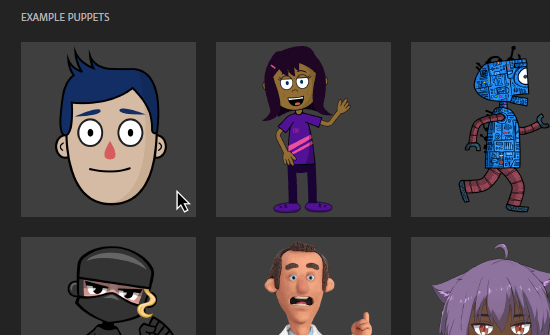
We will deal with these in later tutorials. For now lets go back to the ‘Home’ screen. Click on the ‘Home’ icon again. You should see a selection of demo puppets.
Lets click on the ‘Chad’ puppet.
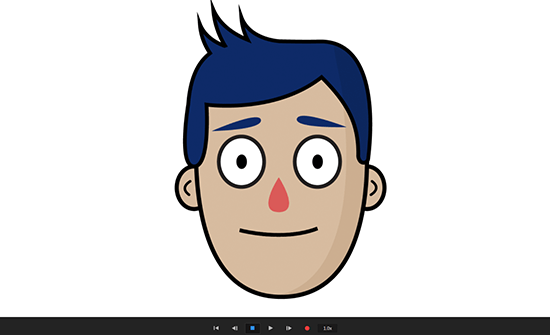
You should be automatically taken to the ‘Record’ screen. If your webcam and microphone are on, you should notice that ‘Chad’ is mirroring your movements.
If you don’t have the webcam and microphone on, you can enable them by clicking on the webcam and microphone icons on the top right of screen. You should see yourself in the top right window. (you may need to grant Adobe Character Animator access to these devices).
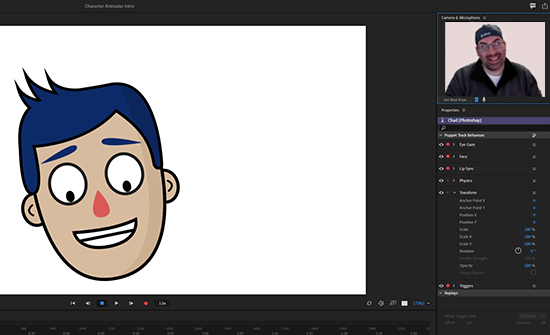
Now we want to play with the ‘Chad’ puppet and see what he can do.
Lean from side to side to observe how he moves.
Raise your eyebrows.
Blink.
Smile.
Move your pupils from left to right.
Look surprised.
‘Chad’ should do the same.
It is great practice to reset your rest pose often. A puppet can synch with you in a slouched position – or even think another object in the frame is you. As a habit, I hit ‘Set Rest Pose’ before I do any recording – just to ensure that the puppet is aligned with my neutral position.
Press ‘Set Rest Pose’.
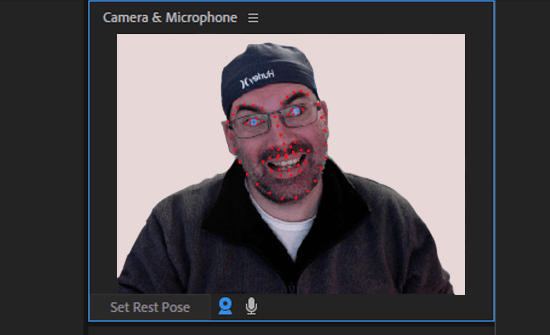
You should notice little red dots appear all over your face in the camera window. These dots represent the points on your face that Character Animator is tracking. Chad may have jumped slightly too as he reset to match your position.
Sometimes the tracker may think something else is your face. (I have a door handle that in low lighting often gets mistaken as a face!). So it is always good to try and increase the lighting to provide better tracking details. If another object is mistaken for your face – just lean across screen and the tracker should switch to your face. Then settle back into a neutral position and hit ‘Set Rest Pose’ again.
Another thing you can do is ‘Refresh the scene’.
While ‘Setting a Rest Pose’ will reset the relationship between you and the puppet, ‘Refreshing the Scene’ will reset the puppet back to a key-framed or default position on the stage. This is especially useful if you have a puppet that has wandered off-screen!
Try saying something. Chad should match your voice. Adobe Character Animator can match your voice in real time – like you are doing now, or it can take a recorded piece of audio and calculate how the mouth should look. We have more detailed tutorials on that process you can find [here].
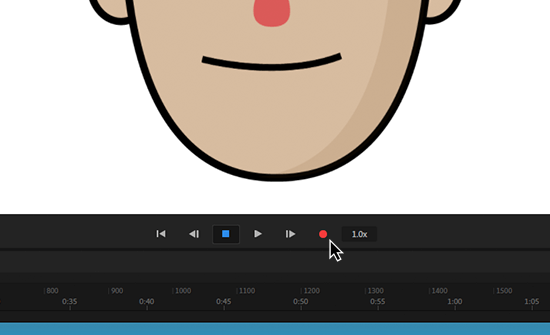
Now we are going to do a live test recording. What we will do is press the big red button beneath the scene window. A countdown will sound and then we can record a short message. Try doing some actions while you speak – like blinking your eyes and raising your eyebrows. When you are done, click the red button to stop.
Congratulations – you’ve just created your first animation. Now let’s watch it. Hit the ‘Play’ button. You should see what you have recorded during play back.
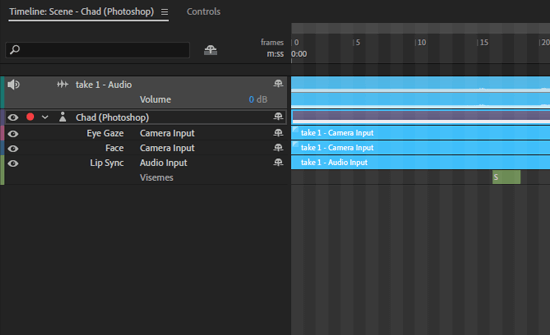
You might have noticed on the timeline various recording inputs have appeared. These may include Eye Gaze Camera Input, Face Camera Input, Lip Sync Audio Input and Visemes. Each line represents the data captured during the recording. We will go into more detail with each of these in a later tutorial.
In this tutorial we looked at the four screens inside the Adobe Character Animator interface.
We learnt how to use example puppets from the Adobe Character Animator library.
In the next tutorial we will go through creating a new project and importing a puppet from ElectroPuppet.
You can view that [here]
ElectroPuppet acknowledges the traditional custodians of the land, the Gumbaynggirr people.
We pay our respects to their elders, past, present and emerging.